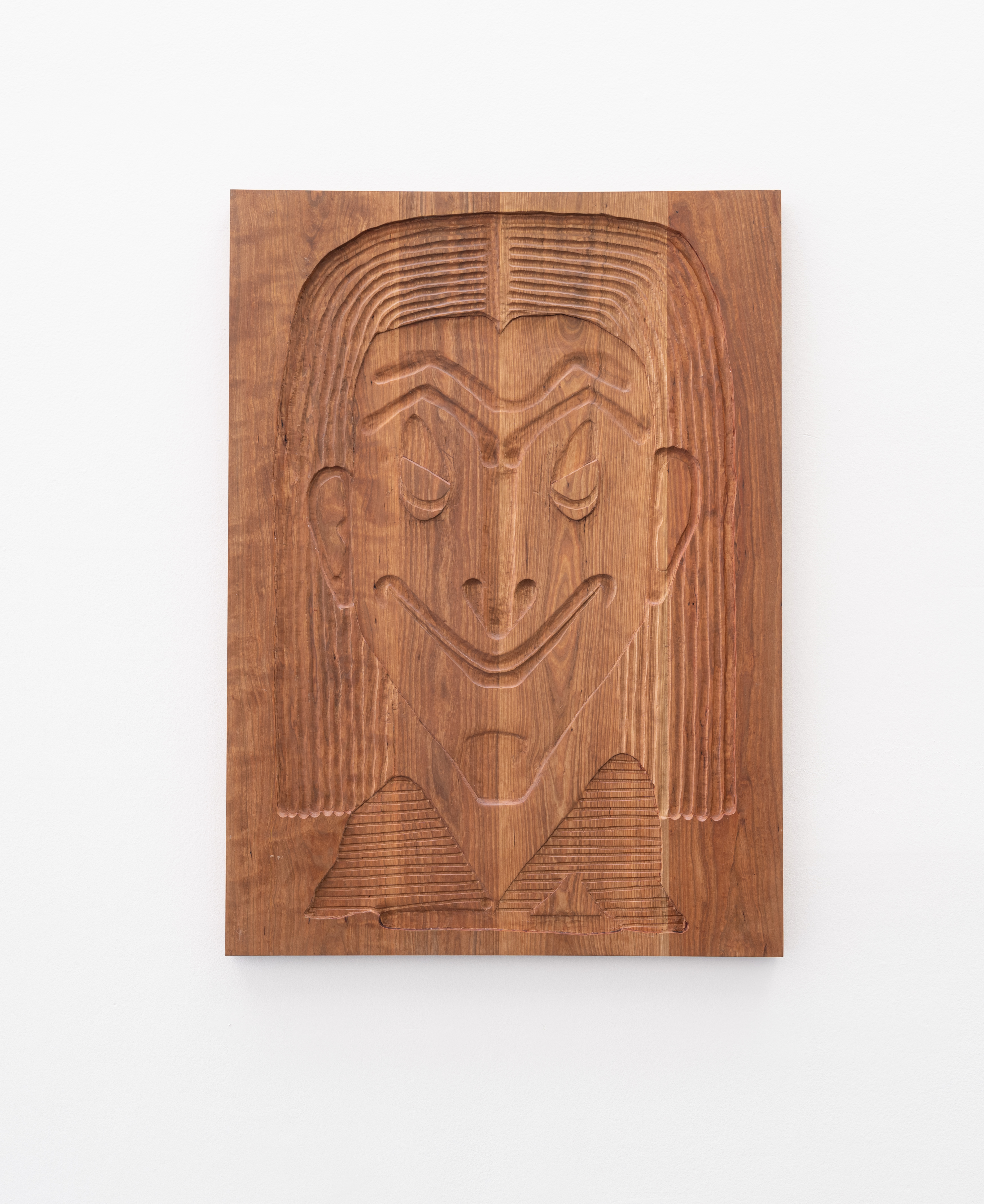
2023, cherry wood
For several years now, Ignace Cami has been training himself in the traditional cutting of outsized koekplanken [biscuit moulds] using text or image. Cami collaborates with local bakers who use their own, often secret, speculoos (a typical Belgian spiced biscuit) recipe to bake biscuits. The biscuit is then displayed and offered in a mobile biscuit cart. Biscuit moulds can be traced back to a pre-Christian ritual of offerings: gradually, the offering was replaced by its image baked in biscuit.
For his solo exhibition RE: ANKER, Cami cut the images of three Antwerp giants into biscuit moulds: Druoon Antigoon; Pallas Athena, his wife; and Lange Wapper. According to legend, Druoon Antigoon ravaged Antwerp by demanding high tolls for passage on the River Scheldt, cutting off a hand from anyone who could not pay. Eventually, with a ruse the hero Silvio Brabo managed to cut off Antigoon’s hand and threw it into the river. This is how the city supposedly got its name, Antwerpen literally meaning hand-werpen (hand throwing). From the 15th century on, giants were driven through the city in processions and circumambulations or ommegangen. The giants symbolise power and oppression. When a new monarch ruled the city, Antigoon was used as a warning of what could happen to leaders who wanted to keep the Antwerp people under oppression.
Installation pictures: copyright M HKA/clinckx


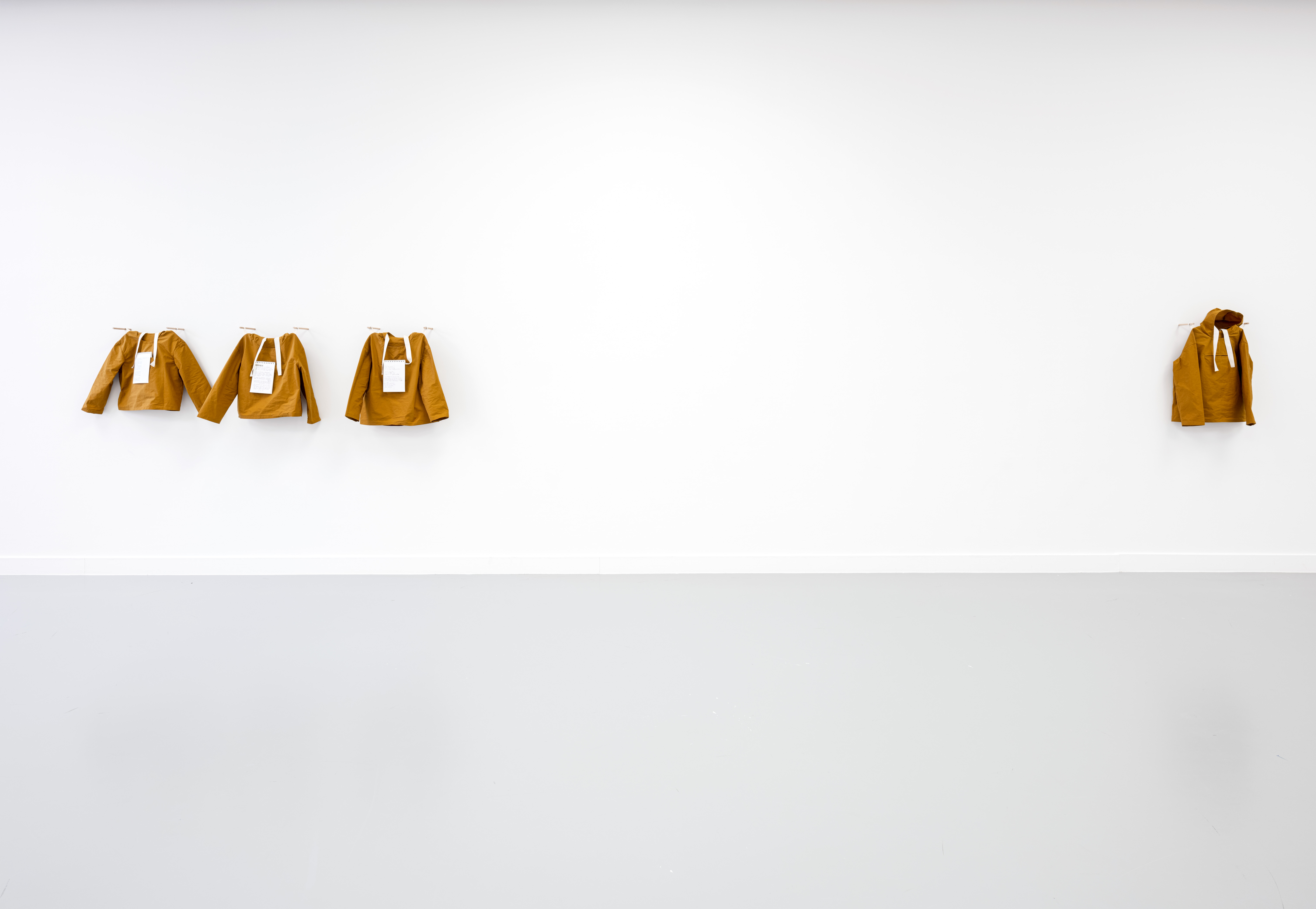
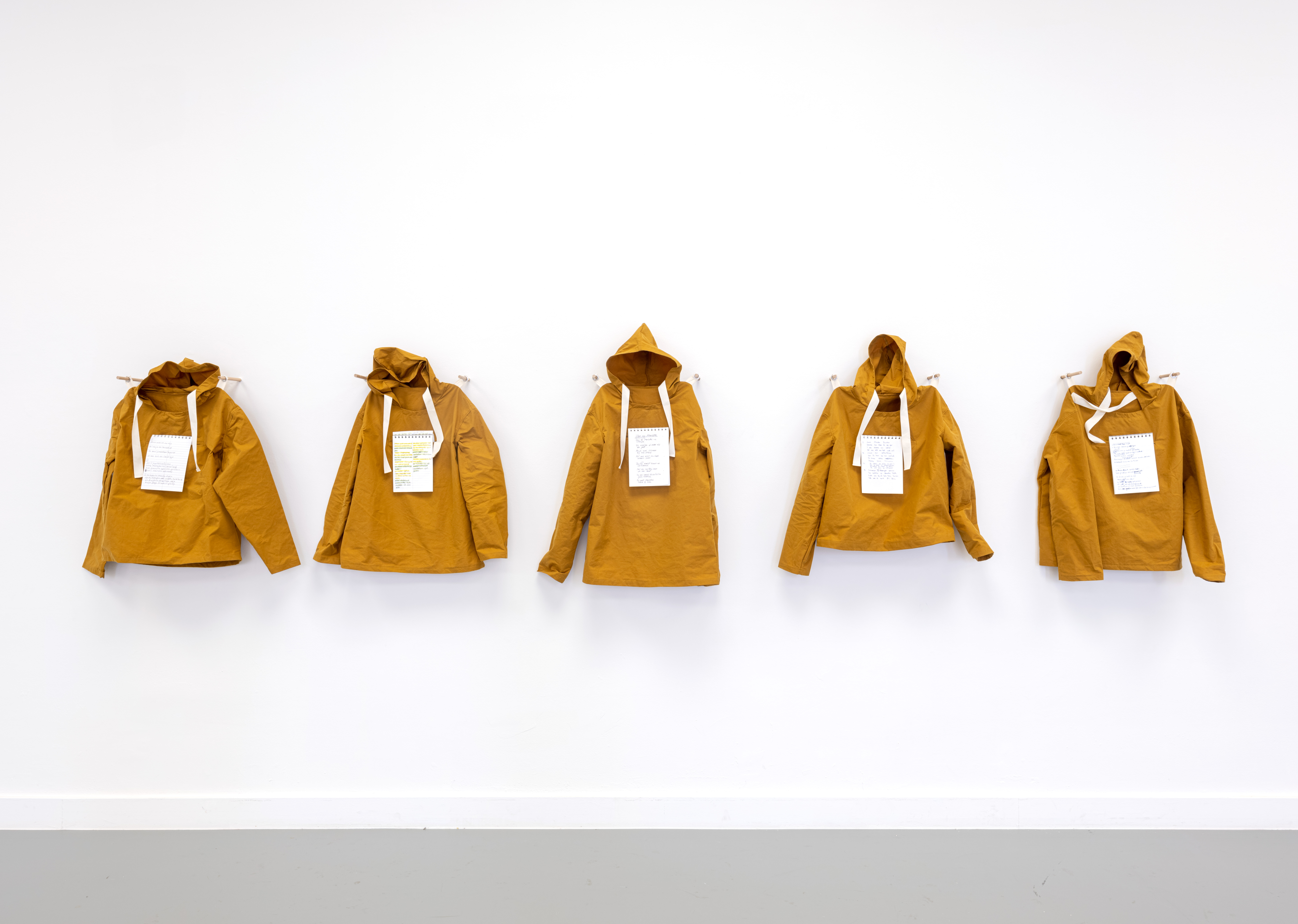
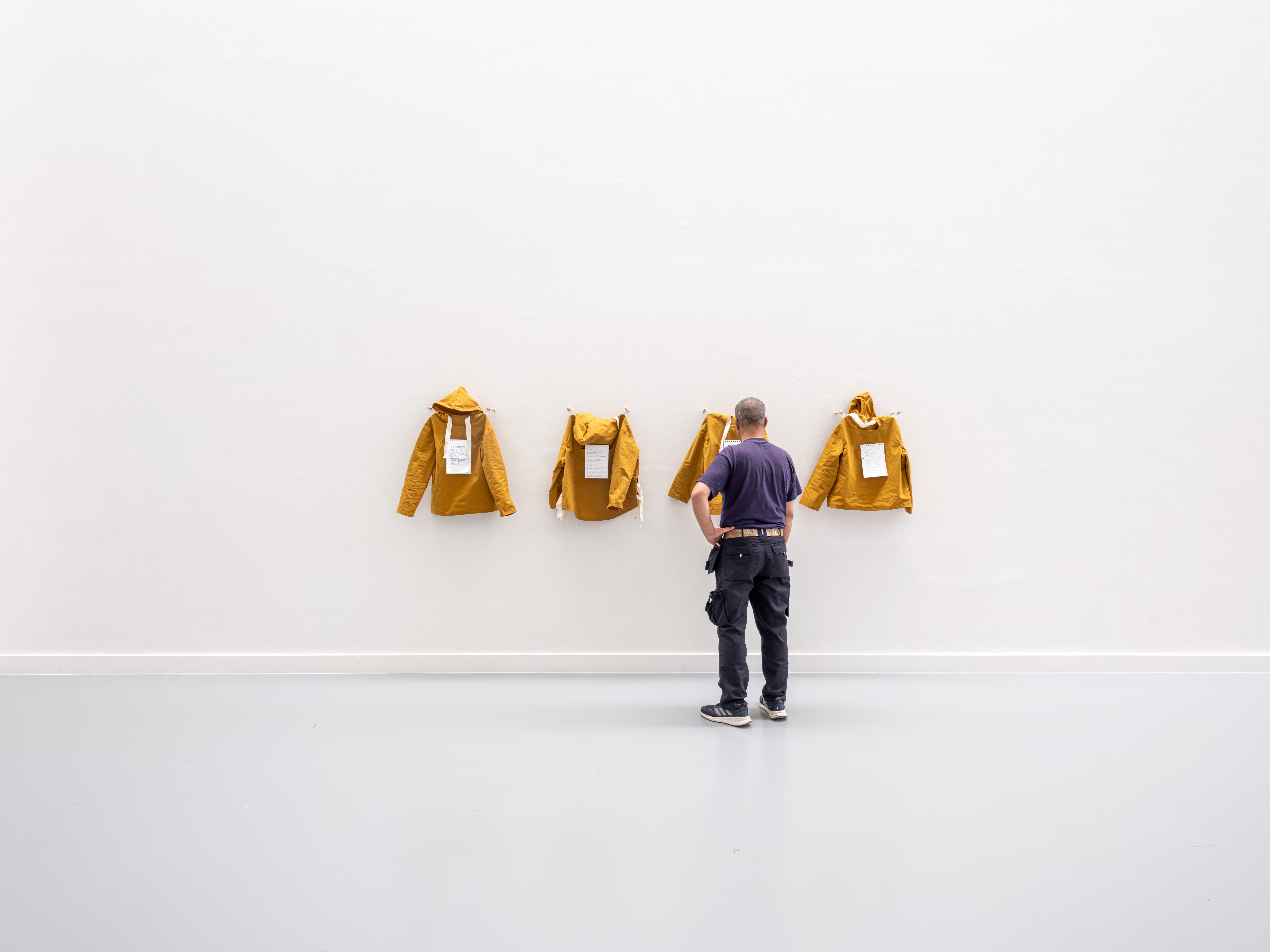
2023, choir, 13 jackets, phonetic texts, piano, guitar
Ignace Cami’s RE:ANKER comprises a newly formed choir. Three songs about Antwerp and its port are sung by a group of twelve singers that are new to the Dutch language. Individually writing their own lyrics through the act of listening, they phonetically transform the original words and sounds into something new and enigmatic. Cami initiated the collaborative singing performance RE:ANKER specifically for his solo exhibition of the same name at M HKA. Entwining the connective nature of singing with the alien experience of facing a foreign language, the transformative power of interpretation is harnessed.
Installation pictures: copyright M HKA/clinckx
Performance pictures: copyright M HKA/Azouaghe
Installation pictures: copyright M HKA/clinckx
Performance pictures: copyright M HKA/Azouaghe
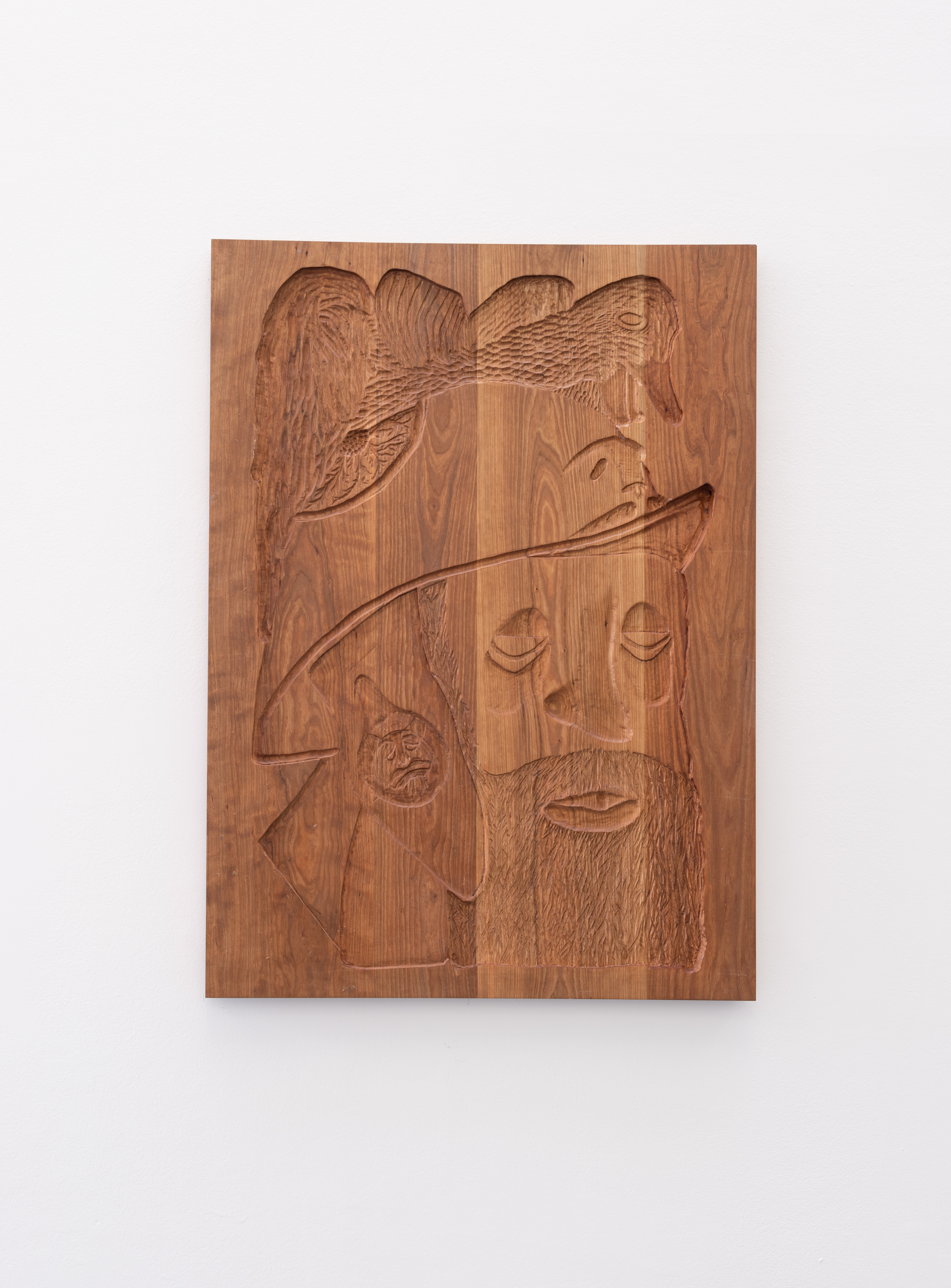
2023, cherry wood
For several years now, Ignace Cami has been training himself in the traditional cutting of outsized koekplanken [biscuit moulds] using text or image. Cami collaborates with local bakers who use their own, often secret, speculoos (a typical Belgian spiced biscuit) recipe to bake biscuits. The biscuit is then displayed and offered in a mobile biscuit cart. Biscuit moulds can be traced back to a pre-Christian ritual of offerings: gradually, the offering was replaced by its image baked in biscuit.
For his solo exhibition RE: ANKER, Cami cut the images of three Antwerp giants into biscuit moulds: Druoon Antigoon; Pallas Athena, his wife; and Lange Wapper. According to legend, Druoon Antigoon ravaged Antwerp by demanding high tolls for passage on the River Scheldt, cutting off a hand from anyone who could not pay. Eventually, with a ruse the hero Silvio Brabo managed to cut off Antigoon’s hand and threw it into the river. This is how the city supposedly got its name, Antwerpen literally meaning hand-werpen (hand throwing). From the 15th century on, giants were driven through the city in processions and circumambulations or ommegangen. The giants symbolise power and oppression. When a new monarch ruled the city, Antigoon was used as a warning of what could happen to leaders who wanted to keep the Antwerp people under oppression.
Installation pictures: copyright M HKA/clinckx
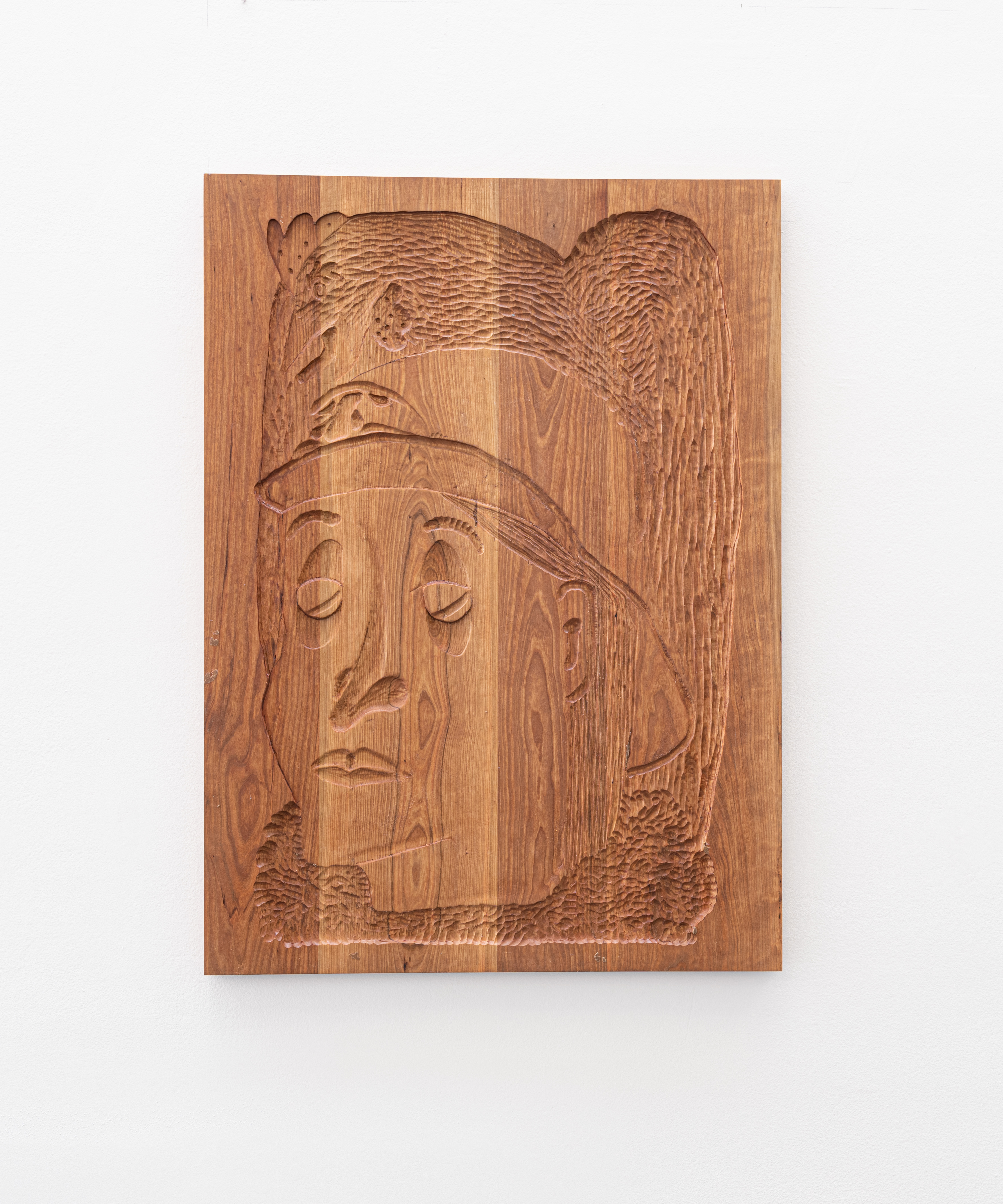
2023, cherry wood
For several years now, Ignace Cami has been training himself in the traditional cutting of outsized koekplanken [biscuit moulds] using text or image. Cami collaborates with local bakers who use their own, often secret, speculoos (a typical Belgian spiced biscuit) recipe to bake biscuits. The biscuit is then displayed and offered in a mobile biscuit cart. Biscuit moulds can be traced back to a pre-Christian ritual of offerings: gradually, the offering was replaced by its image baked in biscuit.
For his solo exhibition RE: ANKER, Cami cut the images of three Antwerp giants into biscuit moulds: Druoon Antigoon; Pallas Athena, his wife; and Lange Wapper. According to legend, Druoon Antigoon ravaged Antwerp by demanding high tolls for passage on the River Scheldt, cutting off a hand from anyone who could not pay. Eventually, with a ruse the hero Silvio Brabo managed to cut off Antigoon’s hand and threw it into the river. This is how the city supposedly got its name, Antwerpen literally meaning hand-werpen (hand throwing). From the 15th century on, giants were driven through the city in processions and circumambulations or ommegangen. The giants symbolise power and oppression. When a new monarch ruled the city, Antigoon was used as a warning of what could happen to leaders who wanted to keep the Antwerp people under oppression.
Installation pictures: copyright M HKA/clinckx
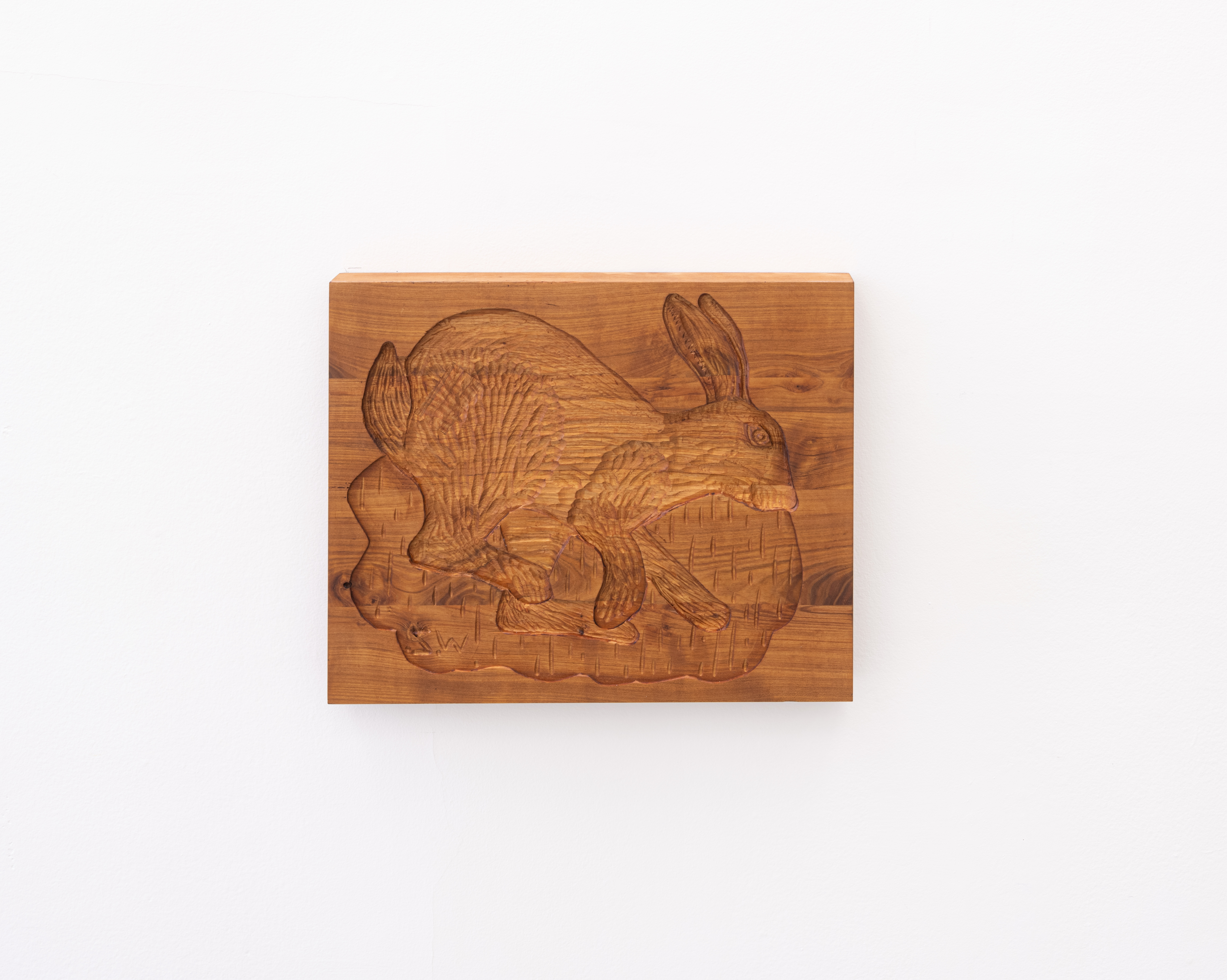
2023, pear wood
For several years now, Ignace Cami has been training himself in the traditional cutting of outsized koekplanken [biscuit moulds] using text or image. Cami collaborates with local bakers who use their own, often secret, speculoos (a typical Belgian spiced biscuit) recipe to bake biscuits. The biscuit is then displayed and offered in a mobile biscuit cart. Biscuit moulds can be traced back to a pre-Christian ritual of offerings: gradually, the offering was replaced by its image baked in biscuit.
Haas is an ode to Ward Zwart.
Installation pictures: copyright M HKA/clinckx